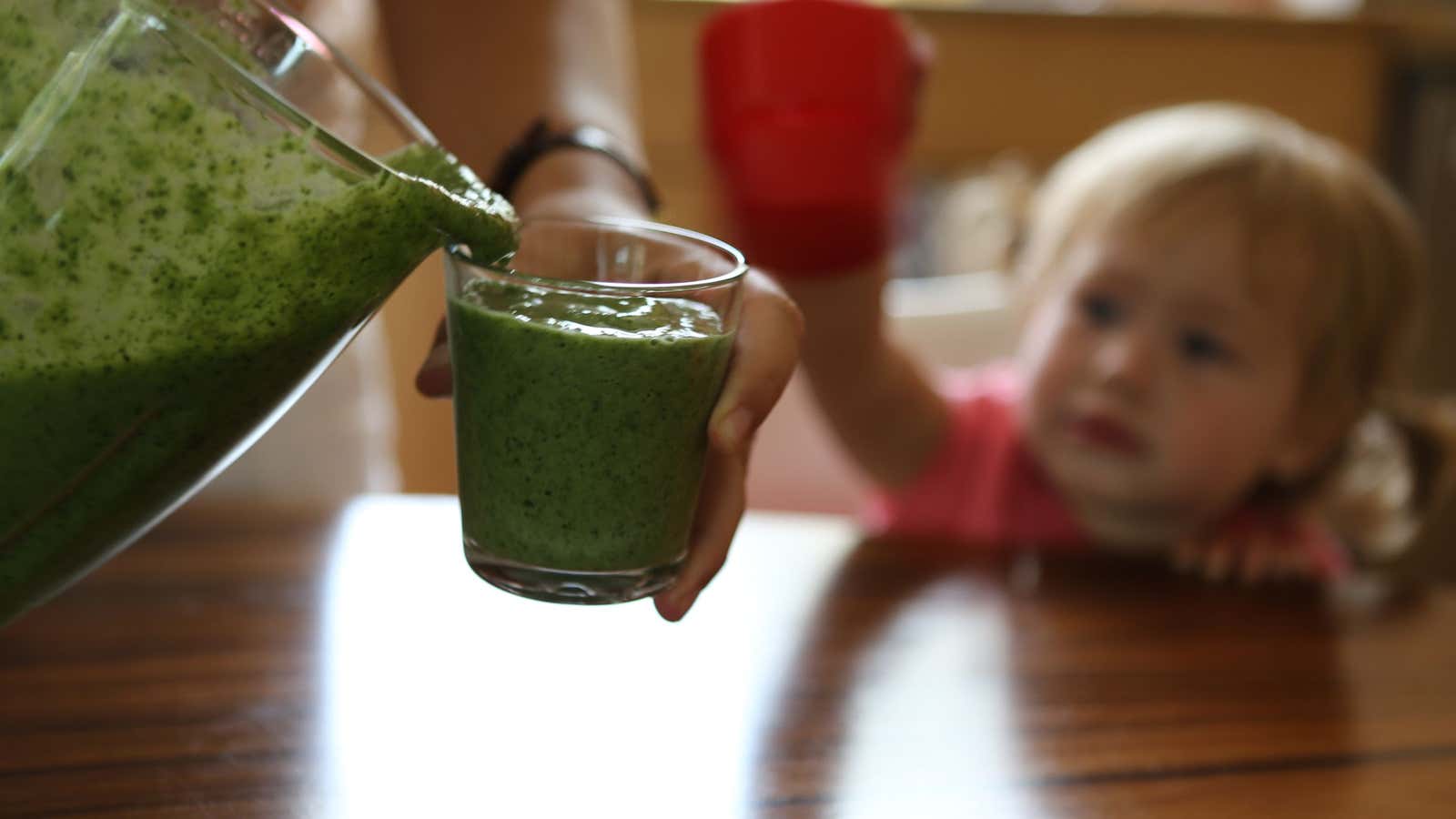This post has been corrected.
It’s the hipster foodie’s worst nightmare: The recent rise in the popularity of kale in the developed world could be creating a shortage of the leafy green, popular in smoothies, salads, and cooked dishes. According to ABC News in Australia, the Netherlands-based Bejo Seeds, one of the world’s major kale seed suppliers, has run out of every variety of the superfood’s seeds. As a result, farmers in Australia may not be able to meet global demand. This could also cause problems for farmers that have eliminated other crops to make room for the increasingly lucrative green.
Whether this latest threat is real or overblown, we’re here to offer a solution: Stop eating kale, at least for the summer.
If you’re a devout kale fanatic, you know the salad-bar garnish turned “it” green is a crop traditionally eaten in the colder months of fall and winter. The hardy vegetable is more tender and tastes sweeter after a frost, thanks to the plant’s natural reaction to cold temperatures. In the dog days of summer, it is fibrous and can taste muddy and bitter.
So, regardless of whether this seed shortage will ripple through the global kale supply, the hot summer months are a great time to diversify your veggie intake. Foods in season taste better, are often cheaper, and are better for the environment because growing in season requires fewer chemicals and transportation costs.
Here’s a list of summer veggies that taste best right now, in most of the world, when they’re at their peak:
Arugula
These leaves come close to kale’s nutritional value; they’re filled with calcium, folic acid, magnesium, iron and vitamins C and A.
Green beans
Strictly summer plants, they can’t survive in the winter, so eat up while you can.
Corn
Freshness is key for the best corn-on-the-cob, which is sweetest from July to October.
Cucumbers
They can be up to 20 degrees cooler inside than the outside air, so the phrase “cool as a cucumber” is accurate.
Basil
Like green beans, tender basil leaves won’t make it through the cold winter, so make (and even freeze) that pesto while you can.
Tomatoes
They’re the poster vegetable of seasonal and local eating. They’re easy to grow in the summer, and never taste quite as good when imported or grown in greenhouses during the cold season.
Eggplant
This short-lived perennial vegetable thrives under excessive heat.
Lettuce
Although it is harder to grow lettuce during the hottest months of the year (they prefer springtime) extra care and shade can yield a crunchy salad.
Squash
It’s called summer squash for a reason. Zucchini and yellow summer squash overwhelm many gardeners with their abundance at this time of year.
Correction (July 25): An earlier version of this article incorrectly cited a Bon Appétit article about an additional kale scare that turned out to be an April Fool’s joke.




